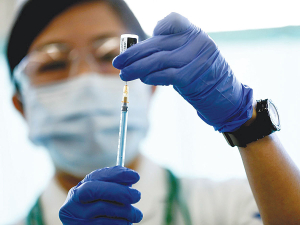M.I.A.
OPINION: The previous government spent too much during the Covid-19 pandemic, despite warnings from officials, according to a briefing released by the Treasury.
 A new study from the University of Otago shows a visible urban/rural divide in Covid-19 vaccination rates.
A new study from the University of Otago shows a visible urban/rural divide in Covid-19 vaccination rates.
According to a new study from the University of Otago, there was a visible rural/urban divide in Covid-19 vaccination rates.
The study, Rural-urban variation in COVID-19 vaccination uptake in Aotearoa New Zealand: Examining the national roll-out, sought to analyse vaccination uptake in rural versus urban settings during the peak period of New Zealand’s national vaccination roll-out in 2021.
The research found varying levels of vaccine uptake among different population groups. The study, published in Epidemiology and Infection, used a national dataset of 4.3 million health service users.
According to the study, at the national level, overall vaccination uptake in rural areas lagged most urban areas, with rural areas lagging behind their urban counterparts by 5-11% by December 2021.
However, the research found this gap is not as clear when also looking at vaccination rates in terms of ethnicity, age, and/or region.
While vaccination uptake among older people in rural areas largely reflected urban uptake, vaccination rates among younger people in rural areas tended to be lower than those of younger people in urban areas.
Talis Liepins, the lead author of the study and a PhD candidate in the University of Otago’s Department of General Practice and Rural Health, says the findings suggest opportunities for improvements in vaccination delivery models for rural and urban communities and further highlights the urban-rural divide in relation to equitable healthcare.
“It is important we advance general awareness around equity of access for rural populations and how health interactions for rural communities differ from urban communities,” says Liepins.
The researchers also found “considerable variance” in uptake between rural older and rural younger people; with the rural urban differences much more apparent in those aged less than 45 years.
Co-author, Professor Garry Nixon, head of rural section in the department of general practice and rural health, says that these differences, which were visible across population groups, suggest possible different barriers to access.
Funded by the Ministry of Health COVID-19 and National Immunisation Programme, the study is the first of three exploring the COVID- 19 vaccine rollout in rural Aotearoa New Zealand.
The National Wild Goat Hunting Competition has removed 33,418 wild goats over the past three years.
New Zealand needs a new healthcare model to address rising rates of obesity in rural communities, with the current system leaving many patients unable to access effective treatment or long-term support, warn GPs.
Southland farmers are being urged to put safety first, following a spike in tip offs about risky handling of wind-damaged trees
Third-generation Ashburton dairy farmers TJ and Mark Stewart are no strangers to adapting and evolving.
When American retail giant Cosco came to audit Open Country Dairy’s new butter plant at the Waharoa site and give the green light to supply their American stores, they allowed themselves a week for the exercise.
Fonterra chair Peter McBride says the divestment of Mainland Group is their last significant asset sale and signals the end of structural changes.

OPINION: Your old mate welcomes the proposed changes to local government but notes it drew responses that ranged from the reasonable…
OPINION: A press release from the oxygen thieves running the hot air symposium on climate change, known as COP30, grabbed your…